A Basic Guide to Saving Money on Groceries
It’s all about saving money on groceries today! If you’re like most families, your grocery shopping experience has probably evolved over the last several years. That’s because prices keep increasing, and quite frankly, we want more money left in our pockets after our grocery shopping trip.
Grocery stores know this and have become very competitive in earning loyalty by offering fantastic ways to save money. If your grocery shopping hasn’t changed over the years, you might miss out on huge savings from your grocery expenses.
Look at our essential guide for saving money on groceries while you’re at the grocery store.
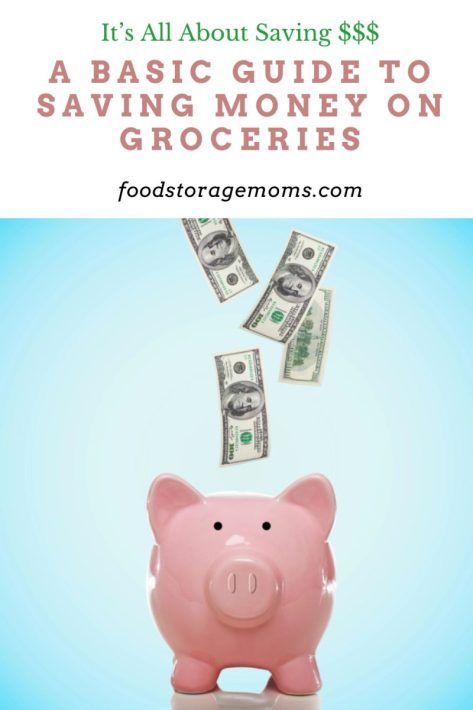
How to Save Money on Groceries
Browse Store Flyers
Today’s shoppers are less loyal to one store than 20 years ago. Customers have learned to be more frugal with their money by going where the deals are.
This might mean multiple stops during your grocery trip and a little extra cherry-picking. Browse the store flyers and jot down the best deals you want to take advantage of on a pad, and plan your stops accordingly.
Just yesterday, we received flyers from Smiths, the local store brand from Kroger’s, and from Costco. We use the coupons from Smiths all the time, and often save $8.00 – $10.00 on the costs of food on each shopping purchase.
Get Set up on Customer Loyalty Programs/Apps
Sign up or download the store’s app to create even more savings opportunities. After you scan your rewards card or enter your customer number, you can watch the savings add up and see your bill go down.
Smiths often have specials related to the clip coupons, but also have deeper discounts using digital coupons. It may seem like a hassle to sign up for both loyalty programs, but it can save money within your grocery budget when you take advantage of exclusive discounts.
Snag the Freebies
Many grocery stores promote a free item of the week just by being signed up with their loyalty programs. That’s free food! Just have your loyalty card or app on hand when approaching the checkout counter to get your free items. Mark likes orange juice, and often there is a free 52 oz bottle included with each coupon batch, and those generally cost close to $5.00.
Pharmacy Prescriptions
Another perk of shopping at certain local grocery stores in your area is that they have a pharmacy in their store. Because of your loyalty to that grocery store, you can get prescription refills for a fraction of the price.
I highly recommend looking at GoodRX because it shows you the cheapest place to buy prescriptions. I can pay cash at certain stores, and the cost is lower than the co-pay through my insurance.
Mark has a 30 day prescription we generally run through our insurance for a 30 day supply at a cost of $20.30 at Costco. He recently requested the doctor write the prescription for a 90 day supply. The cost through insurance was $59.60, but the counter clerk took a minute to check on the Costco discount. The cost for the 90 day supply ended up being $29.00 without running it through our insurance plan. That’s a significant savings!
Bring a Calculator
Another way to stay on budget during your grocery shopping experience is to bring a calculator. This keeps you from zero surprises when you reach the checkout area. Check out the total cost if you use the multiple-item expense instead of buying smaller amounts at a higher cost.
I also like to compare various brands and package sizes based on the cost per oz which is usually posted next to the unit price.
Get Groceries Based Off Your Pantry
Before you head to the grocery store, take a gander at the stock in your pantry. Is there anything with just one or two ingredients that can be transformed into an entire meal?
You would be surprised what you can make with the food you have stocked away. This also helps you avoid buying food that you already have in your inventory.
Stick to Meal Plans
Do you ever wander while grocery shopping and put miscellaneous items that look good at the time into your grocery cart? Most of us have. Some of us have habits we need to change so our visits to the grocery aisles are planned and not random.
Have a game plan before you even set foot in the grocery store by putting together a shopping list. Write down several meal plans based on your favorite recipes so you can choose the right items for your cart. Again, shop smart by looking at the ad flyers before you leave for the stores to you take advantage of savings based on what’s shown on your grocery list.
Avoid Impulse Items
This is a biggie! Avoid putting impulse buys in your grocery cart to help save even more money on your grocery bill. This might mean leaving your husband and kids at home since they often throw extra “goodies” into the cart while you’re not looking.
Steer clear of the candy bars and small bottles of refrigerated pop in the coolers by the check-out lanes since those impulse purchases can really add up.
Never Pay Full Retail
Avoid paying full retail on anything during your visit. Now, I know that sometimes that isn’t possible, but you can likely find that item on sale for much cheaper at another store location. Watch for my monthly “What To Stock Up On” series to save big bucks on needed items.
You do have to consider the cost in time and gas money visiting multiple stores. So, planning ahead and checking out where the deepest savings are makes sense.
Buy the Generic Store Brand
You might not believe this, but buying certain generic brands is just as good as buying the leading national brands. No joke. Here’s a little secret for someone who worked retail for several years. Brand-name products tend to cost more, believe me.
Many of the generic foods you find in your local grocery store are actually the same foods as the leading brands, simply under a different label. Once in a while, you might pick up a generic-brand food that doesn’t meet your standards, but I doubt you’ll find that is the case very often.
Don’t Fall for Eye-Level Products
Have you ever noticed that most of the products on the store shelves are more expensive at eye level? Grocery stores are smart and have strategically set up their shelves this way. Be sure to scan from top to bottom the sections you’re hunting for the best deals.
There will also be items on the shelves that are discounted and not reflected in the store flyer. Take some time to review what has a discounted tag you weren’t aware of. If it’s on your grocery list, you hit pay dirt.
Check Unit Pricing
Checking the unit pricing can also save you a lot of money. Most grocery stores include unit pricing on their shelf tags to help you compare which container or package is the better value.
Buy in Bulk
Buying bulk items is also another great way to save money during your grocery visit. For instance, you might pay more upfront for a large bag of dried beans than for a small can of beans, but over time, you will pay more while getting less if you rely on the smaller packages.
Mark texted me from Smiths yesterday and mentioned they had a case sale going on. Many of the Campbell soups were on sale for $.99 per can if you bought them by the case.
Often stores will have special sale items in highlighted bins that are prominently positioned in the store so that foot traffic will pass by. Keep your eyes open as you travel throughout the store, just in case.
Freeze Meats That are Great Deals
When you see a hot deal on meat, please don’t pass it up. When you get home, you can freeze the meat. Recently, we purchased a few packages of pork that were on sale based on the “buy one, get one free” pricing.
This way, you can stock up on meat and not have to buy it at a higher price on your next visit. Thaw it in the fridge when you’re ready to use it.
Look for Markdowns
Grocery stores hate throwing out perishable foods when they expire. Typically, a few days before an item is thrown out, stores mark it down to blow it out. Keep your eyes peeled.
This can lead to huge savings on meat, dairy, bakery goods, and produce. Just be sure to use them in a reasonable time, so they don’t spoil.
Pay With Cash
I’m not sure why this works, but it’s proven. Using cash will help you spend less money than putting it on a debit/credit card.
Experts have found that we find it more painful to hand cash over the counter and are more prone to spend less than if we swipe a piece of plastic. Plus, you can’t go over your budget once that cash is gone.
Rain Checks
Is there a sale item the grocery store has run out of stock? Be sure to request a rain check, if that’s the store’s policy, so you can get that deal when it is back in stock. Some retail stores even give money back if they are out of stock on certain ad items. Talk about a win-win! But you have to ask.
Don’t Assume the Big Store Chains Have the Best Prices
Many of us assume that stores like Walmart, Target, Sam’s Club, and others have the lowest prices. We’ve noticed that the local Trader Joe’s has some great deals on many items. We’ve started buying many fresh produce items there.
Also, consider having some of your groceries delivered. Yes, there may be a delivery fee, but if the store is making regular deliveries to your neighborhood, it could be cheaper than driving both ways to the store.
Final Word
This is an essential guide to saving money for future grocery store visits. If you’re a careful grocery spender, what other ways have you found to save money? If we know we save money on groceries every time we shop, we can reduce our budget. May God bless this world, Linda
Copyright Images: Pink Pig with Keyboard Depositphotos_58330293_XL By Serggn, Piggy Bank with Cash Depositphotos_22663189_S By Melpomene
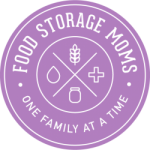
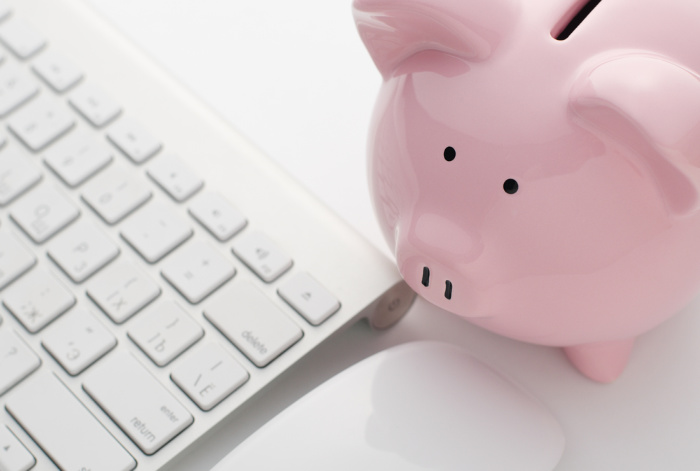

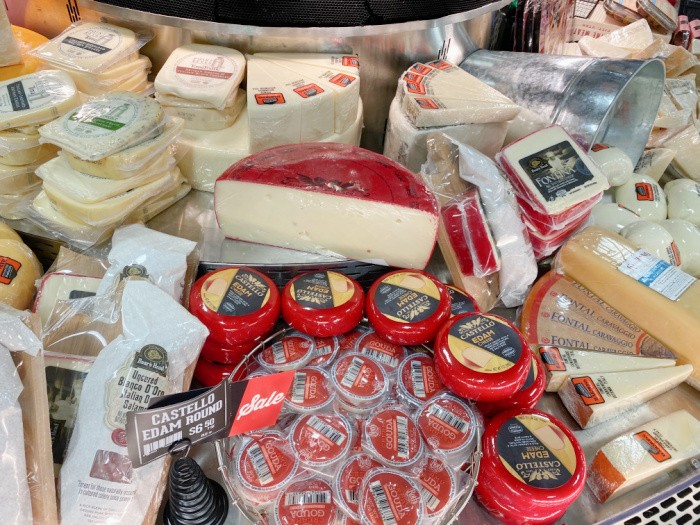
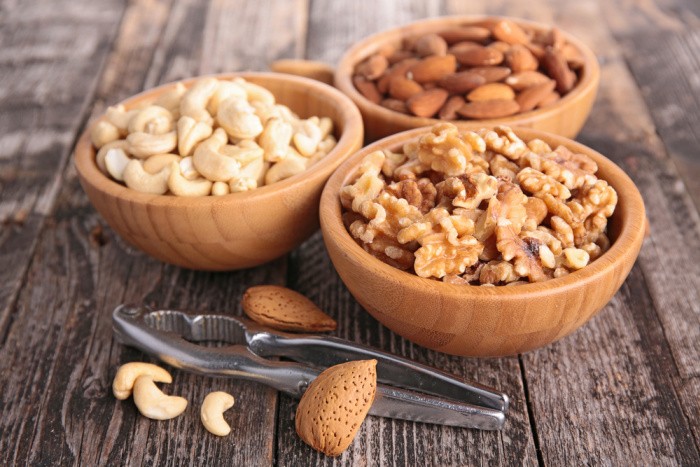
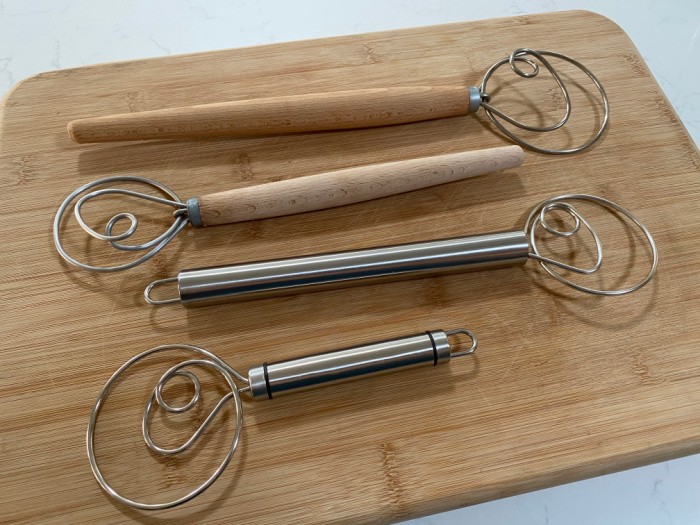
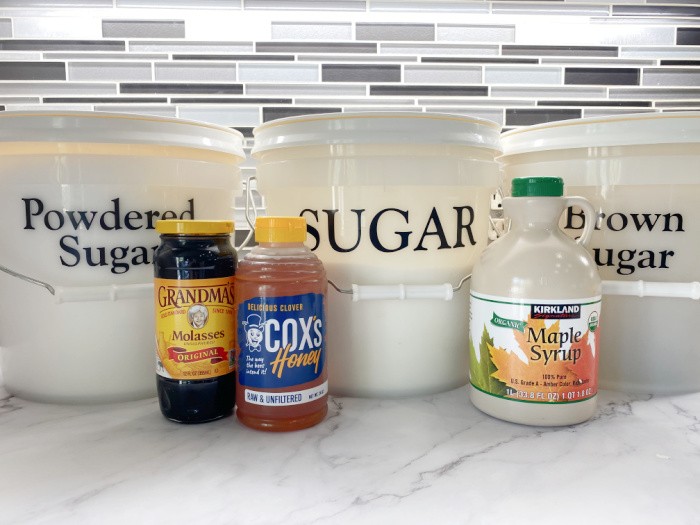















Just an FYI to be careful with those sales tags on items on the shelves. One local market has started putting items on clearance, but the initial discount is only 10% off! It’s only after a few weeks that the discount level goes up….and 10% off is usually less savings than a weekly sale at a competing market.
But for deeply discounted items that a store is using as a loss leader to get you into the store, I not only buy the limit, I tend to go back a few times for a few batches of the limit. Check your store policy as some places may be more strict than others. But usually if you go with your spouse then both of you can buy the limit, just as separate orders. 🙂
Hi DM Walsh, thanks for the tip! We can all use the savings tips to save MONEY! I love it! Linda
I found that following a meal plan and making that meal plan based on what I have in the freezer and on the pantry shelf reduces the cost of groceries! Then, I generally only need to shop for fresh veggies, fruit and dairy. Of course, this also reduces the amount of food I have on hand so what I try to do is a monthly shopping trip and purchase only those things that I have used during the month. I keep a running list of the pantry shelf items I use during the month so I always have those on the shopping list. This helps with food rotation as well.
Something I did the other day was to go through my spices and make a “master list” to post on the cupboard door. What I found was that I have 3 of some spices and very little of others.
The cost of spices is really high in my opinion. So, I try to shop the bulk section at my local Winco when I need something that is not highly used. That way, I can purchase smaller amounts which save me money. Also I try to make sure that the menu plan does not include recipes that require “odd” spices!!
Another tip that I use when planning my shopping trip is to not only take my calculator (it is on my phone) but I also use the calculator when going through the ads. This helps with planning what and how many of a given item I am looking for.
Hi Leanne, great tips!! You are so right we must have a plan in order to save money. I wish I had a Winco where I live. I went to one with my daughter and the prices were super low. I love their bulk buying section. Great comment, Linda
Linda, as usual, great tips and reminders! One money-saver I’ve found are privately owned “discount” stores: most of their items are at or past the expiration dates but this seldom matters on canned or boxed foods (except for dry cereal, lol). A lot of their meats are frozen, so unless thawed, doesn’t make a difference. Including luncheon meats…like, the big chains receive the pkgs frozen, don’t defrost until ready to put in showcase. But they then sell the frozen meats, if close to expiration date, to discount places for very little. Last week I bought 2 lb frozen pkgs of sliced ham, turkey, chicken for $1.79/pkg. Good deal!
In a nutshell, I do/did a lot of your ideas, and they all work together to reduce grocery costs: monthly menu, shopping list, cash envelope, calculator, generic brand products, few processed/ready-to-cook meals. Here’s a tip I do when going between stores one month to next: I save and bring with me my receipts from other shopping trips: easy to compare pricing between stores, because sometimes it’s just easier to go to Just one place, gulp, until you look at prices for staples! Or in some cases, there’s a lower price for a (usually generic brand) staple where the month before, this store was higher. I do Not expect myself to remember all the prices. But, receipts help. Last month I went first to the store that is usually second in line: found soups for 50cents/can. Checked my old receipt from competitor across the street: same soups were 69/79/89 cents/can. Doesn’t seem like much savings but adds up when buying a case! So that’s my tip for the day!
Hi Wendy, that’s a big difference in the price of canned soups!! I love buying cases because they save me money. The lower the price the better. I have to tell you a funny story. My cute daughter went to a “discount store” and got 40 pounds of plantains for $4.00. She sent me a picture of the awesome buy!! She called me and said the people at the store said to cook them in the peel or boil them like potatoes. Let me say that 40 pounds were a lot of food!!! I had the giggles so bad just thinking how she was going to prepare all those plantains. She made some awesome meals! Linda
and I’m a cheapskate! hahaha most every grocery store has markdown areas
Smiths for example has a bookcase in produce where everything in a red mesh bag is a dollar! yesterday I got three peppers and a cucumber for a dollar! I’ve gotten bags of oranges with a bad one for a dollar! and salads marked half price that I steam for a dinner veggie!
and bread the same, a rack or two with everything half price or less!
and eggs??? oh my gosh, I go early and find the cartons with one or two broken for half price! what a deal!
dairy the same! I regularly find milk going to go out of date for 1.99 and sometimes even 99 cents! gotta go early coz it goes fast!
and an endcap or cart with overstock or bent cans – regularly get veggies or bean for 50 cents – I got closeout on cranberry last month for 25 cents a can!
I just have a little route I regularly run that takes 5 min if I find nothing and cash in when there is something! happy shopping!
Hi Greg, great tips, thank you for sharing!!!! I love it! Linda
I do the same Greg. My local grocers (one mile away so total 2 mile walk) has high produce turnover and have day-old produce mesh bags for 99 cents each. I’m limited to what I can carry in my backpack home! I try to go when they have a few weekend specials, like this weekend cilantro and radishes are on sale. I try to go early too! I get sunshine and exercise with my bargains! I dehydrate excessive bargain produce so nothing goes to waste. Being frugal makes me happy!
Hi Deb E, I love what you do to save money! Linda
Something that I do now is jot down in a little notebook what prices are at the local grocery stores as well as the bigger stores if I drive to the city. That way, I can compare prices. I have found that the cost of gas and time to drive 70+ miles to the nearest city offsets the cost savings unless I have other things that need to be done in the city: dr appointments is a big one. Then, I can justify the savings if I HAVE to drive to the city. But that only happens a couple of times a year. It is well over 100 miles to the nearest Costco or Sam’s, so I don’t shop there. But my daughter and son-in-law make a trip to Costco 4 times a year so if there is something in bulk that I want/need, I have them purchase it for me and reimburse them! I have started purchasing organic/non-gmo items through Azure Standard. The drop location is fairly close, and my daughter purchases a lot of bulk items from them so she can pick up my order if needed, but I generally go with her. (I know I pay more through Azure Standard, but getting organic/non-gmo products locally is nearly impossible!!)
There are only two grocery stores in the town I live in: Safeway (small one) and an independent grocery store. I use my loyalty program at Safeway. I saved my points to fill up my car at a local gas station but that is ending at the end of April so I will need to use my points for food!! I also use the online Safeway app to “clip” coupons – saves big time!!
Hi Leanne, wow, that’s a drive 70 miles to the nearest grocery store! I hear you on the distance, I used to complain about 10 miles. Azure Standard has great products, its very popular here in Utah. It’s really awesome you and your daughter can coordinate trips to Costco for things you need. I love coupons and loyalty points, we saved $8.00 today on a $50 worth of groceries today. Love it! Linda
Every sale is not a sale if you ask my girls. They consider 20% off a teaser sale.
As much as I love my full pantry, I have to remember, just because I have more, doesn’t mean I should EAT more. Larger quantities shouldn’t mean larger servings.
HI Chris, great point, just because we have more doesn’t mean we should EAT more. These days 20% works for me. I just looked at some small bundt pans 6 cup size (one cake mix fills two). Keep one and deliver one to a neighbor. Six years ago I paid $12.00 for each one of them and now before any tariffs they are $36.00 each! Yikes! I have to agree at grocery stores 20% off are teasers to get you in! I can’t believe what the preps I bought years ago are now. My Berkey bottles were $15.00 and now they are $50.00 each. Plus the fact, some items are no longer available, I think people are starting to get the preparedness plan, its about time. Just saying. Linda